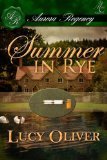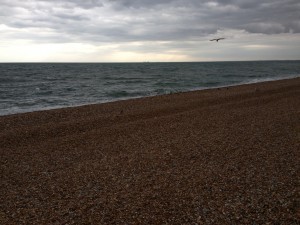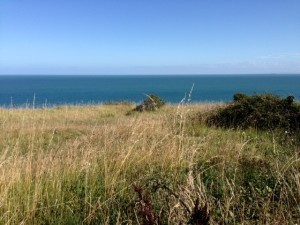Hannah Fielding's Blog, page 111
February 3, 2014
A most Venetian collectable: Murano glass
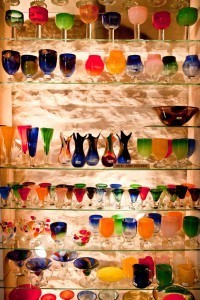 My love affair with Venice started at an early age when I visited the city of romance with my family as a child. Even then, my wide eyes were drawn to the beautiful glassware items in shop windows. So when I grew to be a woman and developed the hobby of antiquing and poking about in markets and bric-a-brac shops, I found I couldn’t resist picking up pieces that called to me.
My love affair with Venice started at an early age when I visited the city of romance with my family as a child. Even then, my wide eyes were drawn to the beautiful glassware items in shop windows. So when I grew to be a woman and developed the hobby of antiquing and poking about in markets and bric-a-brac shops, I found I couldn’t resist picking up pieces that called to me.
Murano glass originated in the 13th century on the island of Murano, a mere kilometre or so from central Venice. There, Venetian glassmakers, whose roots lay in Egyptian glass crafting (since Rome had conquered Egypt), gathered together. Most historians agree that the reason for the move was that the furnaces the glass makers used to forge the glass were deemed too risky a fire hazard in the timber-built properties of Venice city; but some believe that the Murano craftsmen were deliberately ostracised on the island to protect closely the secret of their art. Either way, as more and more glassmakers relocated to the island, Murano became the capital of glassmaking in Europe. So revered became the glass masters (after all, they were a major source of trading income for the Republic of Venice) that a guild was set up to protect them, and in 1605 it was decreed that they would have privileged social status and their daughters be permitted to marry into the Venetian wealth and nobility. Glass making, then, was a most respectable career path!
The glassmakers deservedly earned a reputation for the quality and artistry of the glass they created and the technologies they developed, such as in creating crystalline, enamelled, gold-threaded, multicoloured (millefiori) and milk glasses, and glass gemstones as sparkling as the real thing. So goes the Murano saying: Good tools are nice, but good hands are better. The artist is the key to the creative process, and the modern-day Murano glassmakers follow a rich tradition. The oldest glass factory on Murano, for example, is Antica Vetreria Fratelli Toso, founded in 1854: take a look at the website for a stunning array of glass.
For me, the attraction of Murano glass is threefold:
The colours: Colour and Murano glass are synonymous. The vivacity of the colours is simply breathtaking.
The artistry of each piece: There is such a sense of history and of the hand-made in the pieces, and to own a Murano glass item is to own something that no one else on the planet owns, because each is unique in its finish.
The romance: The art and the décor items bring sparkle and colour and opulence to any environment, and the jewellery is beautiful. Did you know that the famous Venetian lover Giacomo Casanova (see my earlier post on him) once told a lover, Lucrezia Locheschi, to wear her precious Murano glass beads for a date with him – and only her beads?
In my research for The Echoes of Love, I couldn’t resist a visit to the island of Murano, and the Glass Museum there in the Palazzo Giustinian, which has glassware dating right back to the very beginnings of glass creation. Subsequently I wrote several beautiful pieces into the novel, from vases to lamps to exquisite chandeliers. Other pieces made with Murano glass include artworks, figurines, jewellery, paperweights, bowls and glass for mosaics (of vast interest to my heroine Venetia in The Echoes of Love, for she is a professional mosaic restorer). For a glimpse of some of the many beautiful items available, visit the Your Murano website.
February 2, 2014
A man grounded in legend
Since I was a young girl, tucked up in bed and listening avidly to my governess weaving bedtime tales, I have loved legends. Fairytales too, of course – they sowed the seeds for my romantic nature – but legends fascinated me most: those that have stood the test of time, that offer intriguing explanations for the modern world, that are at once fantastical and yet, somehow, incorrigibly believable.
As I grew older, I became something of a ‘collector’ of legends – devouring books on the subject and taking a keen interest in local legends wherever I travelled. And when I came to write the hero for my latest book, The Echoes of Love, I found myself creating a man grounded in legend.
Take the following extract from the book:
Soaking up the romantic atmosphere, Venetia smiled back at Paolo. ‘So, aren’t you going to tell me any more legends?’
‘If that’s what you’d like, cara, I will oblige,’ Paolo said, grinning and lighting a cigarette as they waited for their coffee. ‘There’s a very famous legend about the Gulf of Cagliari, which is called “Bay of Angels”. As the visitor comes into the Port of Cagliari from the sea, the first image that appears is the promontory of St Elias. Its most distinctive aspect is a limestone ridge at the top of the hill. It’s called “Sella del Diavolo”. Legend has it that after the seven days of Creation, God decided to give the angels a land where they could live in peace, with the condition that it had to be a place where there were no wars or evil. The angels searched long, until they came down on our earth and discovered the Gulf of Cagliari with its emerald sea, its green vegetation, and the pure white of its cliffs.
“Here is our uncontaminated place,” the Archangel Gabriel said, “we will make it our city of love and peace.”
‘The angels settled in what is known today as the Bay of Angels. But this prompted the envy and anger of Lucifer who, before he was cast out of Heaven, rode his horse and, with his army of demons, declared war on the angels. The angels then brought about a storm, creating big waves in the Gulf and they made Lucifer fall off his horse. Archangel Gabriel rose into the air with his shining sword and the defeated Lucifer in fury threw off the saddle of his black steed. The saddle immediately petrified, forming the promontory known today as “The Devil’s Saddle”. ’
How much more inspiring it is to gaze out at the Bay of Angels and think of this story, of its symbolism in the battle between heaven and hell, than to simply see a rock. The story brings meaning to the setting. The escape into fantasy, into a magical, mythical world, creates connection and romance.
Paolo is a romantic. He is also a man who, like me, has a great deal of respect and interest in legends, which says a lot about who he is as a person: he is intelligent, he is well-read, he is open to differing viewpoints, he is imaginative and – essentially – place matters to him. He likes to know about the country he calls home; it brings a certain comfort and offers some sense of roots for a man who is somewhat adrift (for reasons that become apparent by the end of the book).
In addition, the more you read of the book, the more you realise that Paolo himself is something of a legend – a mirage, not quite what he appears to be. Thus the man living out a story finds himself attracted to other stories as a means to make sense of the world.
I think all romance authors create heroes with whom they could fall in love. Isn’t that the whole fun of writing romance? Your imagination can take flight! In Paolo, I created a man whose imagination and knowledge are attractive qualities, and certainly my heroine Venetia agrees. In a story grounded in realism, the narration of legend allows a short trip into fantasy – a powerful way to build atmosphere and colour.
What do you think? Do you share my interest in legends? Do the likes of Robin Hood and Camelot and Atlantis spark a fire in you? What are your favourite legends? Do you tell your family and friends the stories you’ve heard? I would love to hear your thoughts.
January 31, 2014
Summer in Rye by Lucy Oliver
From the blurb:
A tragedy brought Eva Brookwell and Samuel Shaw back into each other’s lives. But will lies from the past destroy their chances of a future?
Left penniless after the death of her philandering father, Eva Brookwell takes a job as a governess at Rye Hall, but didn’t expect to find her young charges scarred and blinded from smallpox. Rye Hall is an unhappy house with a tyrannical master and Eva is forced to turn to her pupils’ uncle, Samuel Shaw for help.
Eva and Samuel had once been engaged, until his lies drove them apart. Still in love with him, Eva knows she could never trust him again; however he is her only ally in the dark and disturbed household she now lives in.
I was delighted to receive a copy of this book for review, having very much enjoyed Lucy’s first novel (see my review at http://www.hannahfielding.net/?p=1991). This book didn’t disappoint at all; in fact, I was most impressed to find Lucy is as fine a historical romance writer as she is a contemporary romance writer.
I loved this short novel. I read it in two sittings happily ensconced in the corner of a coffee shop, and it felt like blissful ‘me time’.
The story is compelling and believable. I loved the setup – the abused wife, the poor little girls, the lady who’s fallen on bad fortune, the tyrant villain and the former fiance whom I wanted to dislike for abandoning Eva but just couldn’t. The characters leap off the page and demand that you connect with them, for their strengths but also for their flaws. I especially felt for Samuel, and the predicament in which he’d found himself, and I liked Eva’s struggle to cope with Samuel’s past and to broaden her mind.
The story builds to an exciting climax which had me clicking avidly through the pages on my Kindle. The ending was, for me, perfection – everything you could want – and I was left with a happy, warm glow when I got to the last page.
In all, a brilliant, well-crafted, romantic read which has left me very much looking forward to the author’s next historical fiction novel.
I was offered this book in exchange for a fair review via NetGalley.
Summer in Rye is available now from Amazon; click on the book cover below to visit the store.
January 30, 2014
A stormy walk
January 29, 2014
The bookless public library… a peek into the future?
San Antonio, USA. Home to the famous San Antonio Spurs, the San Antonio Stock Show & Rodeo, the Alamo, the Tower of the Americas, Marriage Island, a well-respected zoo and now…. the first bookless public library.
It sounds rather like a contradiction in terms, doesn’t it? When you say the word ‘library’ to me, at once my mind conjures up pictures of beautiful spaces filled with books and scented with that particular and intoxicating aroma of printed pages. Something along these lines:
But Texans have revolutionised the concept of a public lending library, by opening BiblioTech, a new, $2.3 million space that contains not a single physical book, only rows of iMacs and iPads on which to read ebooks. The reason? To broaden the appeal of reading to the city’s residents: San Antonio is the seventh largest city in the US based on population size, and yet comes 60th in the rankings for literacy.
BiblioTech, which is deliberately situated in an economically deprived area of the city where residents have limited access to such technology as ereaders, is proving to be highly popular, with iMacs in demand and ereaders regularly checked out (and, interestingly, so far always returned). It’s also an economical shift, because the cost of the books and equipment is offset against cheaper premises: quite simply less space and book shelving is required.
Other cities – both in the United States and abroad – have watched the development of the library with interest, and there are plans in place to open other bookless libraries.
Personally, I think it’s an exciting innovation. After all, any endeavour that widens interest and engagement in reading is to be celebrated. But I can’t (I won’t!) imagine that bookless libraries could ever replace the traditional, print-book-stacked library, only stand alongside them as a complementary offering. In the UK, the government’s recent closure of smaller public libraries has caused a national outcry, and I think that sentiment would be all the stronger if it were progress forcing the closures rather than purely economic reasons. Libraries aren’t just receptacles for books – they are part of our culture. They have souls! As Jorge Luis Borges wrote: “I have always imagined that Paradise will be a kind of library.”
What do you think of bookless libraries? Should the traditional library offer a blend of ebook reading and print book reading options? Should more disadvantaged areas have bookless libraries? Is there room in modern culture for both kinds of library to happily co-exist? Or is the development of the bookless library another step towards the print book becoming a niche, outdated item? I would love to hear your thoughts.
January 28, 2014
Roast flamingo anyone? Perhaps not…
 Cooking, and enjoying the results, is one of my pleasures in life, so when I am writing a novel I very much relish the research activity of exploring the cuisine of the country in which my story is set. For The Echoes of Love, which is set in Italy, I was quite in my element reading recipe books and trying out dishes. Of course, my characters in the novel eat modern fayre, but the more I read, the more I found myself fascinated by the history of Italian cuisine – and my imagination was soon fired up by an ancient Italian recipe book called Apicius.
Cooking, and enjoying the results, is one of my pleasures in life, so when I am writing a novel I very much relish the research activity of exploring the cuisine of the country in which my story is set. For The Echoes of Love, which is set in Italy, I was quite in my element reading recipe books and trying out dishes. Of course, my characters in the novel eat modern fayre, but the more I read, the more I found myself fascinated by the history of Italian cuisine – and my imagination was soon fired up by an ancient Italian recipe book called Apicius.
For anyone researching Italian cuisine, Apicius: De re coquinaria (On the Subject of Cooking) is fascinating reading. The book was purportedly written by a man named Marcus Gavius Apicius who lived in the first century and gained a reputation for being a lover of gourmet food and a luxurious lifestyle (legend has it that he killed himself with poison when he fell on hard times and could no longer afford to eat the very best of foods!). The published book dates back to the fourth century and, amazingly, is still in print today!
Cooking from the book now isn’t entirely feasible. First, there is the vague nature of the recipes. For example, here is a recipe for nut custard:
Toast pine-kernels and chopped nuts, pound with honey, pepper, liquamen, milk and eggs. A little oil.
Neither ingredients nor method are clear. Some say Apicius was deliberately obtuse in order to protect the secrets of his cooking. Others believe that his contemporaries would have sufficiently understood this shorthand style of recipe writing.
The other, perhaps more compelling reason why Apicius cooking is difficult, is the fact that many of the ingredients of antiquity are not those we turn to today. Take the following recipes:
Roast flamingo
Fattened dormice
Jellyfish omelette
Boiled parrot
Ostrich ragoût
Not types of ingredients readily available to the modern chef, nor appealing, nor, one presumes, legally edible!
However, some of the Apicius recipes are less risqué to the modern palate. In his book Around the Roman Table: Food and Feasting in Ancient Rome, food historian Patrick Faas offers up a range of Roman recipes ‘reconstructed for the modern cook’, including some based on Apicius. This web page offers examples of several: http://www.press.uchicago.edu/Misc/Chicago/233472.html. The roast tuna and veal escalope recipes look quite delicious to me.
In addition, take a look at Cooking Apicius: Roman Recipes for Today by ‘leading reconstructionist cook’ Sally Grainger. As the blurb reads:
Sally Grainger has gathered, in one convenient volume, her modern interpretations of 64 of the recipes in the original text. These are not recipes inspired by the old Romans but rather a serious effort to convert the extremely gnomic instructions in the Latin into something that can be reproduced in the modern kitchen and which actually gives some idea of what the Romans might have eaten.
A Google search for ‘Apicius recipe’ also brings up a host of results for recipes adapted from or inspired by the ancient book.
Seek inspiration from any of these sources and what you cook ties into a legacy of 16,000 years. Even without the flamingo, that’s a history to excite any modern cook who is interested in how we’ve come to eat as we do.
January 27, 2014
The heroine: What occupation says about the character
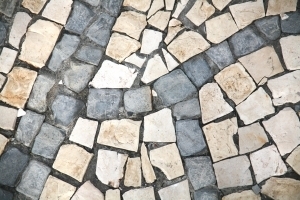 For me, when creating a new heroine for a romance novel, occupation is essential. First and foremost, she must have a career of some sort, because this ensures that she is determined, diligent, focused, goal-oriented, hard-working, imaginative, independent and intelligent… all qualities that I think are essential for a modern-day heroine in order that she can hold her own and be equal with the male hero.
For me, when creating a new heroine for a romance novel, occupation is essential. First and foremost, she must have a career of some sort, because this ensures that she is determined, diligent, focused, goal-oriented, hard-working, imaginative, independent and intelligent… all qualities that I think are essential for a modern-day heroine in order that she can hold her own and be equal with the male hero.
But having established that my heroine must have a passion, a raison d’être, a vision for her future to which she is working, what career do I choose for her? The choice is based on the character herself – is she naïve or worldly, academic or dreamy, organised or chaotic? In all my heroines I select a career that embodies certain qualities that then reflect these aspects of the person herself.
In Burning Embers, my debut novel, Coral is a freelance photographer. I chose this career path because it shows her:
creativity and imagination;
appreciation of beauty in its rawest form, which connects her to the wild Kenyan setting of the book;
independence in being freelance; and
strength in forging a path in what at the time was a fairly male-dominated sphere.
In my new novel, The Echoes of Love, there’s a little more weight and seriousness to Venetia’s career path. She has been to university and qualified as an architect, and she is living in Venice so that she can work for her aunt’s architecture firm. But rather than shut my heroine away in an office and have her meticulously drawing building plans, I chose for her the specialism of mosaic and mural restoration. This conveys several aspects of Venetia’s personality, including her:
appreciation and respect for culture and history;
creativity and artistic flair;
intelligence and keen mind;
serious and thoughtfulness; and
attention to detail and careful approach.
… all qualities that come through as her relationship with Paolo develops. Venetia has, perhaps, a tendency to overanalyse, and to temper her feelings with careful, analytical reasoning, which impedes her love for Paolo initially. Her rigorous academic training and her delicate workmanship are earning her a reputation as a restorer par excellence, and yet all the aspects of her personality that make her so good at her job are less desirable when it comes to romance. For Venetia, there will need to be a process of letting go, of trusting, of casting off the cloak of careful introspection and being less architect, more woman in love. But she already has what she needs to do so: the passion. And as French philosopher, art critic and writer put it in the 18th century, ‘Only passions, great passions, can elevate the soul to great things.’
January 25, 2014
The hero: Mr Rochester as inspiration
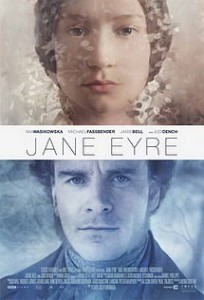 I was delighted recently to discover a new adaption of my favourite English novel, Jane Eyre. Have you seen the 2011 movie, which stars Mia Wasikowska and Michael Fassbender in the Charlotte Brontë classic? From the first scene to the last, I was utterly captivated. Such darkness – such intrigue – such atmosphere – such romance!
I was delighted recently to discover a new adaption of my favourite English novel, Jane Eyre. Have you seen the 2011 movie, which stars Mia Wasikowska and Michael Fassbender in the Charlotte Brontë classic? From the first scene to the last, I was utterly captivated. Such darkness – such intrigue – such atmosphere – such romance!
The structure of this new version, which begins with Jane’s flight from Rochester after discovering his terrible secret and then circles back, is powerful. But for me it is the intensity of the acting and the delivery of the beautifully written dialogue that is most affecting. So many lines that echo long after the last credit:
Rochester: I offer you my hand, my heart. Jane, I ask you to pass through life at my side. You are my equal and my likeness. Will you marry me?
Jane: Are you mocking me?
Rochester: You doubt me.
Jane: Entirely.
~
Rochester: Be my wife.
Jane: You have a wife.
Rochester: I pledge you my honor, my fidelity…
Jane: You cannot.
Rochester: …my love until death do us part.
Jane: What of truth?
~
Rochester: Listen to me. Listen. I could bend you with my finger and my thumb. A mere reed you feel in my hands. But whatever I do with this cage, I cannot get at you, and it is your soul that I want. Why can’t you come of your own free will?
Jane: God help me.
For me, this is the most romantic of love stories, and Mr Rochester is the ultimate tortured hero, and 167 years since his inception, he continues to fuel the imaginations of readers – and of writers. How many of the modern-day heroes we love contain a little of Mr Rochester?
Take Twilight, for example: studies exist on its roots lying in Jane Eyre, and Stephenie Meyer has talked of naming of the hero Edward for its classic feel, and no doubt the English graduate was well familiar with the classic English novel.
In my own writing, I know that Edward Rochester has been an inspiration in my characterisation of the male protagonist. In my new novel The Echoes of Love, for example, Paolo wears a mask, as does Mr Rochester, concealing from the woman he loves a part of himself. And in Burning Embers, my debut novel, Rafe is carrying a dark secret in his heart relating to his late wife that sees him tortured and incapable of allowing his heart to love. Both Rafe and Paolo are attractive heroes, and yet the darkness within them is apparent and frightening for the women who fall in love with them. The culmination of events in both books means that when the truth is exposed, my heroines must be compassionate and courageous – like Jane, returning to Mr Rochester, at the end of Brontë’s novel. And the ending, of course it must be a positive one in which love conquors all; it must lead the reader to that jolt of joy created by Brontë’s famous and eloquent line: ‘Reader, I married him.’
I will leave you with the trailer to the 2011 movie, in the hope that you see the magic of it. Is Michael Fassbender the most attractive Mr Rochester in an adaption yet? Do let me know what you think!
January 23, 2014
Ah, the sea
January 22, 2014
Favourite poems: ‘Tuscany’ by Victoria Sackville-West
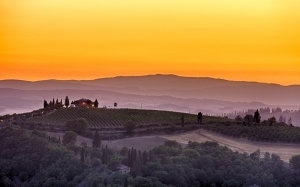 In my new novel, The Echoes of Love, Paolo owns a home in Tuscany, and he persuades Venetia to take on a contract based there restoring mosaics in a nearby ruin he has purchased. I love Tuscany, such a beautiful, unspoilt part of the world where romance is intrinsic in every detail of the landscape, and I very much enjoyed describing this part of the country:
In my new novel, The Echoes of Love, Paolo owns a home in Tuscany, and he persuades Venetia to take on a contract based there restoring mosaics in a nearby ruin he has purchased. I love Tuscany, such a beautiful, unspoilt part of the world where romance is intrinsic in every detail of the landscape, and I very much enjoyed describing this part of the country:
The Tyrrhenian coast glowed under the wide arc of a burning, cloudless blue sky, the sea a shimmering golden mirror; the sweeping coastline looked out over the distant islands of the Tuscan Archipelago, echoing their beauty with its wild and mountainous landscape, the pale rock densely interspersed with exotically green pine groves, and its almost luminescent aquamarine waters lapping the shores Tuscany.
I love poetry that conjures up images of the Tuscan setting, and none more so than a poem simply entitled ‘Tuscany’ by Victoria Sackville-West, Baroness Sackville. Victoria (1862–1936) is perhaps best remembered for her daughter, the writer Vita Sackville-West, but she was a wonderful writer in her own right (and, interestingly, the illegitimate daughter of the 2nd Baron Sackville and a Spanish dancer known as Pepita – no wonder she writes with such passion). Victoria was close friends with the famous sculptor Auguste Rodin; you can see his bust of her in the Musée Rodin.
I hope you enjoy this poem, and find that it transports you to the warmth and colours and beautiful earthiness of Tuscany.
Tuscany
Cisterns and stones; the fig-tree in the wall
Casts down her shadow, ashen as her boughs,
Across the road, across the thick white dust.
Down from the hill the slow white oxen crawl,
Dragging the purple waggon heaped with must,
With scarlet tassels on their milky brows,
Gentle as evening moths. Beneath the yoke
Lounging against the shaft they fitful strain
To draw the waggon on its creaking spoke,
And all the vineyard folk
With staves and shouldered tools surround the wain.
The wooden shovels take the purple stain,
The dusk is heavy with the wine’s warm load;
Here the long sense of classic measure cures
The spirit weary of its difficult pain;
Here the old Bacchic piety endures,
Here the sweet legends of the world remain.
Homeric waggons lumbering the road;
Virgilian litanies among the bine;
Pastoral sloth of flocks beneath the pine;
The swineherd watching, propped upon his goad,
Urder the chestnut trees the rootling swine
Who could so stand, and see this evening fall,
This calm of husbandry, this redolent tilth,
This terracing of hills, this vintage wealth,
Without the pagan sanity of blood
Mounting his veins in young and tempered health?
Whu could so stand, and watch processional
The vintners, herds, and flocks in dusty train
Wend through the golden evening to regain
The terraced farm and trodden threshing-floor
Where late the flail
Tossed high the maize in scud of gritty ore,
And lies half-buried in the heap of grain
Who could so watch, and not forget the rack
Of wills worn thin and thought become too frail,
Nor roll the centuries back
And feel the sinews of his soul grow hale,
And know himself for Rome’s inheritor?



